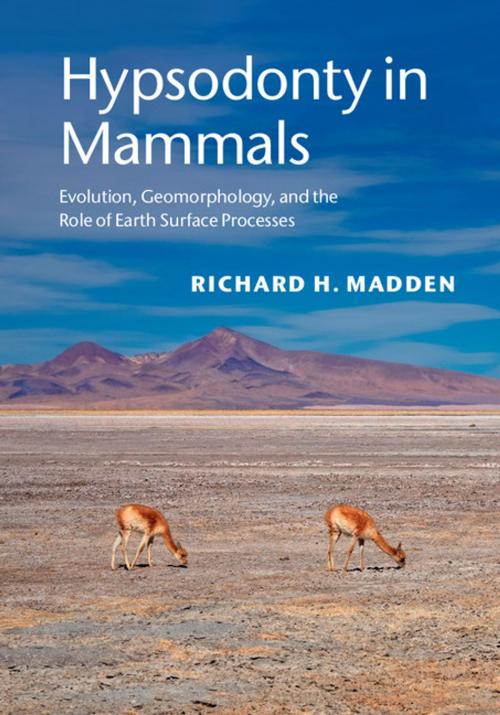Hypsodonty in Mammals
Evolution, Geomorphology, and the Role of Earth Surface Processes
Nonfiction, Social & Cultural Studies, Social Science, Anthropology, Science & Nature, Science| Author: | Richard H. Madden | ISBN: | 9781316188729 |
| Publisher: | Cambridge University Press | Publication: | December 11, 2014 |
| Imprint: | Cambridge University Press | Language: | English |
| Author: | Richard H. Madden |
| ISBN: | 9781316188729 |
| Publisher: | Cambridge University Press |
| Publication: | December 11, 2014 |
| Imprint: | Cambridge University Press |
| Language: | English |
The evolution of high-crowned teeth, hypsodonty, is a defining characteristic of many terrestrial herbivores. To date, the most prominent focus in the study of the teeth of grazing herbivores has been co-evolution with grasses and grasslands. This book develops the idea further and looks at the myriad ways that soil can enter the diet. Madden then expands this analysis to examine the earth surface processes that mobilize sediment in the environment. The text delivers a global perspective on tooth wear and soil erosion, with examples from the islands of New Zealand to the South American Andes, highlighting how similar geological processes worldwide result in convergent evolution. The final chapter includes a review of elodonty in the fossil record and its environmental consequences. Offering new insights into geomorphology and adaptive and evolutionary morphology, this text will be of value to any researcher interested in the evolution of tooth size and shape.
The evolution of high-crowned teeth, hypsodonty, is a defining characteristic of many terrestrial herbivores. To date, the most prominent focus in the study of the teeth of grazing herbivores has been co-evolution with grasses and grasslands. This book develops the idea further and looks at the myriad ways that soil can enter the diet. Madden then expands this analysis to examine the earth surface processes that mobilize sediment in the environment. The text delivers a global perspective on tooth wear and soil erosion, with examples from the islands of New Zealand to the South American Andes, highlighting how similar geological processes worldwide result in convergent evolution. The final chapter includes a review of elodonty in the fossil record and its environmental consequences. Offering new insights into geomorphology and adaptive and evolutionary morphology, this text will be of value to any researcher interested in the evolution of tooth size and shape.















